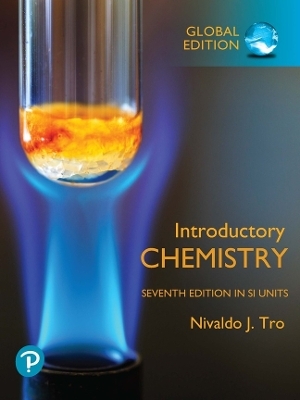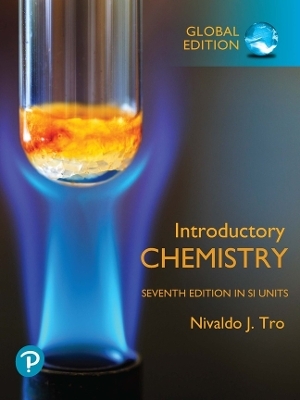
Noble Gas Detectors
Wiley-VCH Verlag GmbH (Hersteller)
978-3-527-61002-0 (ISBN)
- Keine Verlagsinformationen verfügbar
- Artikel merken
This book discusses the physical properties of noble fluids, operational principles of detectors based on these media, and the best technical solutions to the design of these detectors. Essential attention is given to detector technology: purification methods and monitoring of purity, information readout methods, electronics, detection of hard ultra-violet light emission, selection of materials, cryogenics etc. The book is mostly addressed to physicists and graduate students involved in the preparation of fundamental next generation experiments, nuclear engineers developing instrumentation for national nuclear security and for monitoring nuclear materials.
Elena Aprile received her Ph.D. from the University of Geneva, Switzerland, in 1982. After working as a research assistant and research associate at the University of Geneva and in Harvard, she accepted a post as assistant professor at Columbia University in 1986. She has now been a full professor at Columbia since 2001. Aleksey E. Bolotnikov works as Associate Scientist at the Brookhaven National Laboratory in Upton, New York. After receiving his Ph.D. from the Moscow Engineering and Physics Institute, he held posts at several institutes, among them Columbia University, the Marshall Space Flight Center of the NASA and the California Institute of Technology. Alexander I. Bolozdynya holds a post as chief physicist at the Constellation Technology Corporation in Largo, Florida. He received his Ph.D. from the Institute of Theoretical and Experimental Physics, Moscow, in 1985, where he subsequently worked as senior scientist. He then went on to work for Siemens Medical Systems, a Medical Center and Case Western Reserve University before accepting his current post at the Constellation Technology Corporation. Tadayoshi Doke is a Professor Emeritus of Waseda University, Japan. He received his Ph.D. from Kyoto University in 1962 and subsequently worked in various positions at Rikkyo University and Waseda University, both Japan. He is on the editorial board of several scientific journals and the author of numerous scientific papers.
Foreword.Preface.Acknowledgements.1 Introduction.1.1 Units and Definitions.1.2 Brief History of Noble Gas Detectors.2 Noble Fluids as Detector Media.2.1 Physical Properties of Dense Noble Gases.2.2 Energy Dissipation in Noble Gases.2.3 Ionization Clusters and Principal Limitations on Position Resolution of Noble Gas Detectors.2.4 Ionization and Recombination.2.4.1 Jaffe Model of Recombination.2.4.2 Onsager Model of Recombination.2.4.3 Influence of a-Electrons.2.5 Principal Limitations for Energy Resolution.2.6 Detection of Nuclear Recoils.2.7 Detection of High-Energy Particles.3 Elementary Processes Affecting Generation of Signals.3.1 Collection of Charge Carriers.3.1.1 Charge Carrier Drift in Gases Under High Pressure.3.1.1.1 Drift of Electrons in Gases.3.1.1.2 Drift of Ions in Gases.3.1.2 Drift of Charge Carriers in Condensed Phases.3.1.2.1 Drift of Electrons in Condensed Phases.3.1.2.2 Drift of Ions and Holes in Condensed Noble Gases.3.1.3 Charge Carrier Trapping.3.1.3.1 Electron Attachment in Liquids.3.1.3.2 Charge Trapping in Solids.3.2 Electron Multiplication and Electroluminescence.3.3 Charge Carrier Transfer at Interfaces.3.3.1 Quasifree Electron Emission.3.3.1.1 Thermal Electron Emission.3.3.1.2 Hot Electron Emission.3.3.1.3 Transition of Quasifree Electrons Along Interface.3.3.2 Electron Emission From Localized States.3.3.3 Transitions Between DifferentMedia.3.3.4 Ion Emission from Nonpolar Dielectrics.3.3.5 Electron Emission into Nonpolar Dielectrics.3.3.5.1 Electron Emission From Cathodes.3.3.5.2 Electron Injection Through the Free Interface.3.4 Properties of Noble Gas Scintillators.3.4.1 Primary Processes.3.4.2 Emission Spectra.3.4.2.1 Emission Spectra of Gases.3.4.2.2 Emission Spectra of Liquids and Solids.3.4.3 Absorption and Scattering.3.4.3.1 Self-Absorption.3.4.3.2 Impurity Absorption.3.4.3.3 Scattering.3.4.4 Scintillation Light Yield.3.4.5 Refractive Index.3.4.6 Decay Times.3.4.6.1 Decay Times of Gases.3.4.6.2 Decay Times of Liquids and Solids.4 Scintillation Detectors.4.1 High-Pressure Noble Gas Scintillation Detectors.4.1.1 Single-Channel Gas Scintillation Detectors.4.1.2 Multichannel Gas Scintillation Detectors.4.2 Condensed Noble Gas Scintillation Detectors.4.2.1 Scintillation Detectors Using Liquid Helium and Condensed Neon.4.2.2 Scintillation Detectors Using Liquid Argon, Krypton and Xenon.4.2.2.1 Single-Channel Noble Liquid Scintillation Detectors.4.2.2.2 Multichannel Noble Liquid Scintillation Detectors.4.3 Development of Scintillation Calorimeters.4.3.1 Granulated Scintillation Calorimeters.4.3.1.1 UV Light-Collecting Cells.4.3.1.2 Light-Collecting Cells withWavelength Shifter.4.3.1.3 Scintillation Calorimeter LIDER.4.3.2 Barrel Scintillation Calorimeters.4.4 Time-of-Flight Scintillation Detectors.5 Ionization Detectors.5.1 Generation of Induction Charge.5.2 Diode Ionization Chamber.5.3 Triode Ionization Chamber.5.4 Multilayer Ionization Chamber.5.5 Ionization Chamber with Virtual Frisch Grid.5.6 Time Projection Chamber with Scintillation Trigger.5.7 Use of Both Ionization and Scintillation Signals.6 Proportional Scintillation Detectors.6.1 Gaseous EL Detectors with Parallel Plate Electrode Structure.6.1.1 Gas Proportional Scintillation Counters.6.1.1.1 GPSCs with PMT Readout.6.1.1.2 GPSC with Photodiode Readout.6.1.1.3 GPSC with Open Photocathode Readout.6.1.2 High-Pressure Electroluminescence Detectors.6.1.3 Imaging Electroluminescence Detectors.6.1.3.1 Analog Imaging Electroluminescence Detectors.6.1.3.2 Digital Imaging.6.2 High-Pressure Xenon Electroluminescence Detectors with Nonuniform Electric Field.6.2.1 Cylindrical Proportional Scintillation Counters and Drift Chambers.6.2.2 Gas Scintillation Proportional Counters with Spherical Electrical Field.6.3 Multilayer Electroluminescence Chamber.6.4 Liquid Electroluminescence Detectors.7 Two-Phase Electron Emission Detectors.7.1 Emission Ionization Chambers.7.2 Emission Proportional Chambers.7.3 Emission Spark Chambers.7.4 Emission Electroluminescence Detectors.7.5 Vacuum Emission Detectors.7.6 Further Developments of Two-Phase Detectors.8 Technology of Noble Gas Detectors.8.1 Selection of Materials and Mechanical Design.8.1.1 Metals.8.1.1.1 Construction Metals.8.1.1.2 Sealings.8.1.2 Insulators.8.1.3 Feedthroughs.8.1.3.1 Electrical Feedthroughs.8.1.3.2 Optical Fiber Feedthroughs.8.1.3.3 Motion Feedthroughs.8.1.4 Electrodes.8.1.4.1 Active Cathodes.8.1.4.2 Grids.8.1.4.3 Multilayer Structures.8.1.4.4 Amplifying Electrode Structures.8.1.5 Viewports andWindows.8.1.5.1 Materials.8.1.5.2 Optical Windows for High-Pressure Detectors.8.1.5.3 Glass Machining.8.1.6 High-Pressure Vessels.8.1.7 Cryogenics.8.2 Processing High Purity Noble Gases.8.2.1 Pretreatment.8.2.2 Pumping.8.2.3 Baking.8.2.4 Handling.8.3 Purification.8.3.1 Impurities.8.3.2 Chemical Methods of Purification.8.3.3 Electron Drift Purification Method.8.3.4 Spark Purification.8.3.5 Separation of Noble Gases.8.3.6 Circulation.8.4 Monitoring the Working Media.8.4.1 Electron Lifetime.8.4.2 Optical Transparency.8.4.3 Mass and Position of Free Surface.8.4.4 Temperature, Pressure, and Density.8.5 UV Light Collection.8.5.1 Reflectors.8.5.2 Wavelength Shifters.8.5.2.1 Wavelength Shifters Dissolved in Noble Gases.8.5.2.2 Solid Wavelength Shifters.8.6 Photosensors.8.6.1 Photomultipliers.8.6.1.1 Low Temperature.8.6.1.2 PMTs for High Pressure.8.6.2 Semiconductor Photodiodes.8.6.3 Open Photocathodes.9 Applications.9.1 Astronomy.9.1.1 Instrumentation for X-ray Astronomy.9.1.1.1 Gas Imaging Spectrometers On-Board ASCA.9.1.1.2 High-Pressure Gas Scintillation Proportional Counter at BeppoSAX.9.1.1.3 High-Pressure Gas Scintillation Proportional Counter On-Board HERO.9.1.2 Instrumentation for Gamma Ray Astronomy.9.1.2.1 KSENIA On-Board MIR Orbital Station.9.1.2.2 LXeGRIT Balloon-Borne Compton Telescope.9.2 Low-Background Experiments.9.2.1 Direct Detection of Particle Dark Matter.9.2.2 Neutrino Detectors.9.2.3 Double Beta and Double Positron Decay Search.9.2.3.1 Experiments with Active Targets.9.2.3.2 Experiment with a Passive Target.9.2.3.3 Double Positron Decay Experiments.9.3 High-Energy Physics: Calorimeters.9.3.1 Ionization Calorimeters.9.3.1.1 Liquid Argon Calorimeters.9.3.1.2 Liquid Krypton Calorimeters.9.3.1.3 Xenon Calorimeters.9.3.2 Scintillation Calorimeters.9.4 Medical Imaging.9.4.1 X-ray Imaging.9.4.1.1 Analog X-ray Imaging.9.4.1.2 Digital X-ray Imaging.9.4.2 Single-Photon Emission Computing Tomography (SPECT).9.4.2.1 Liquid Xenon Detectors for SPECT.9.4.2.2 High-Pressure Noble Gas Detectors for SPECT.9.4.3 Positron Emission Tomography (PET).9.4.3.1 Liquid Xenon TPC with a Scintillation Trigger.9.4.3.2 Liquid Xenon Scintillation Time-of-Flight PET.References.Index.
| Verlagsort | Weinheim |
|---|---|
| Sprache | englisch |
| Maße | 178 x 242 mm |
| Gewicht | 810 g |
| Themenwelt | Naturwissenschaften ► Chemie |
| Naturwissenschaften ► Physik / Astronomie | |
| ISBN-10 | 3-527-61002-2 / 3527610022 |
| ISBN-13 | 978-3-527-61002-0 / 9783527610020 |
| Zustand | Neuware |
| Haben Sie eine Frage zum Produkt? |
aus dem Bereich


